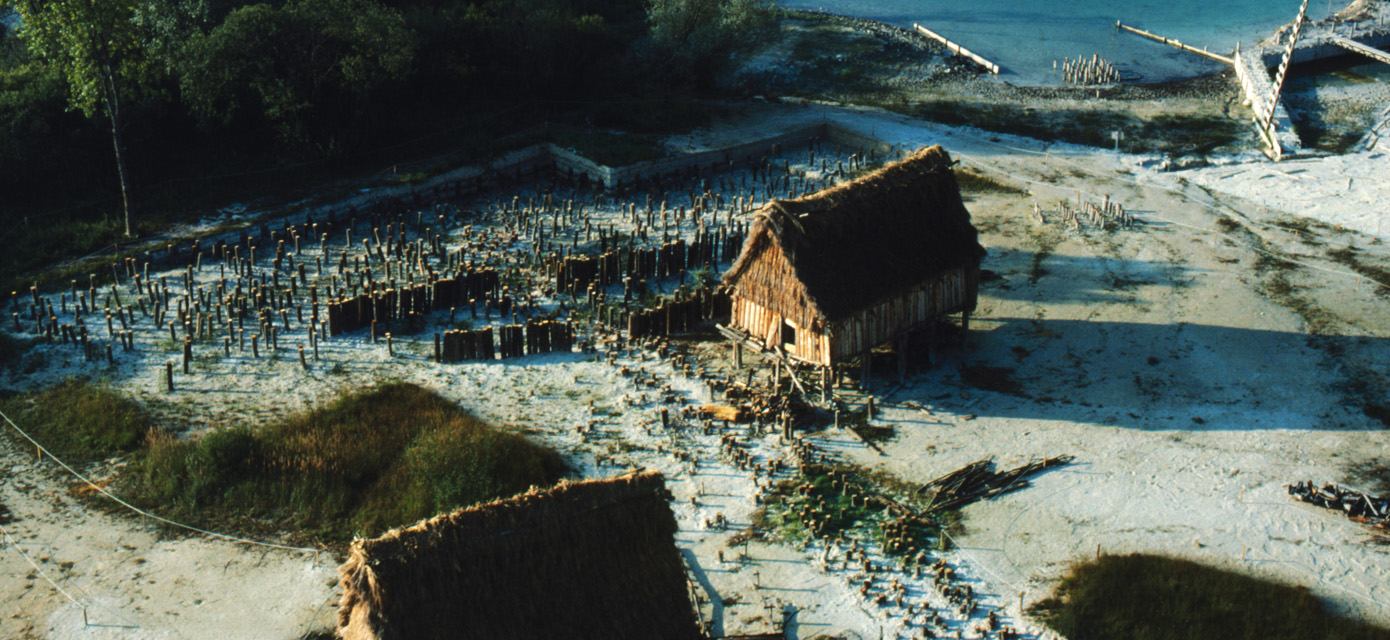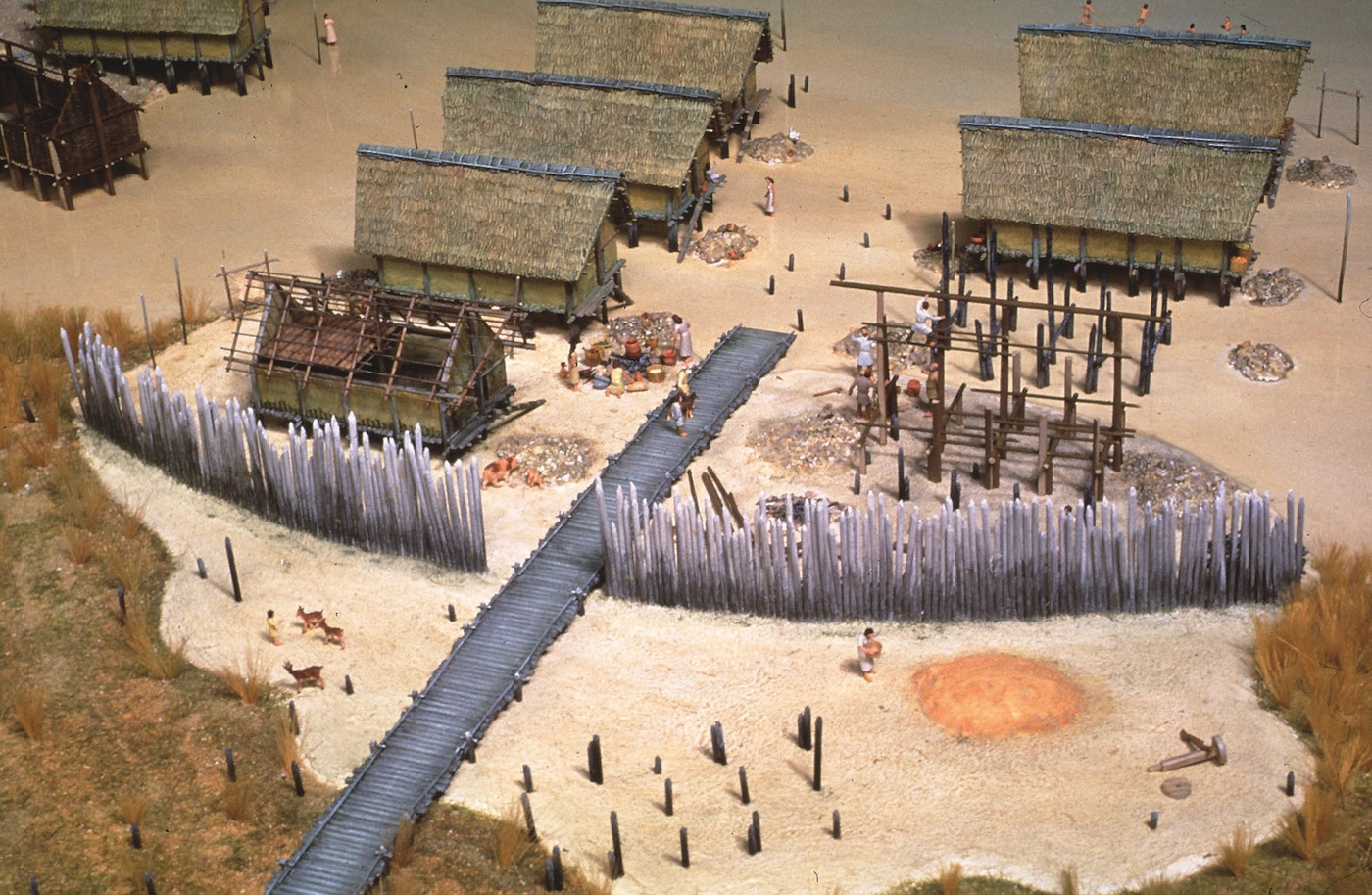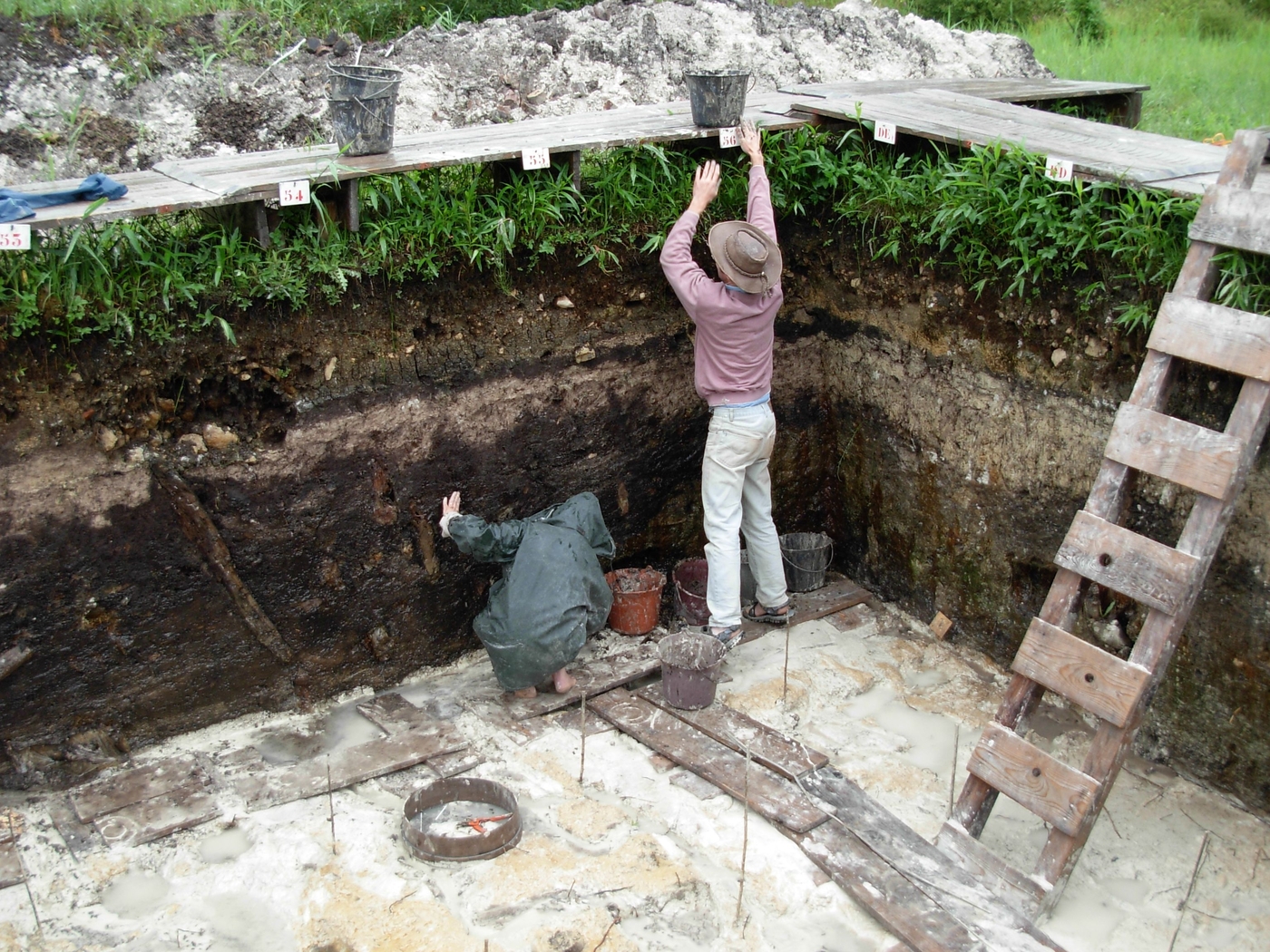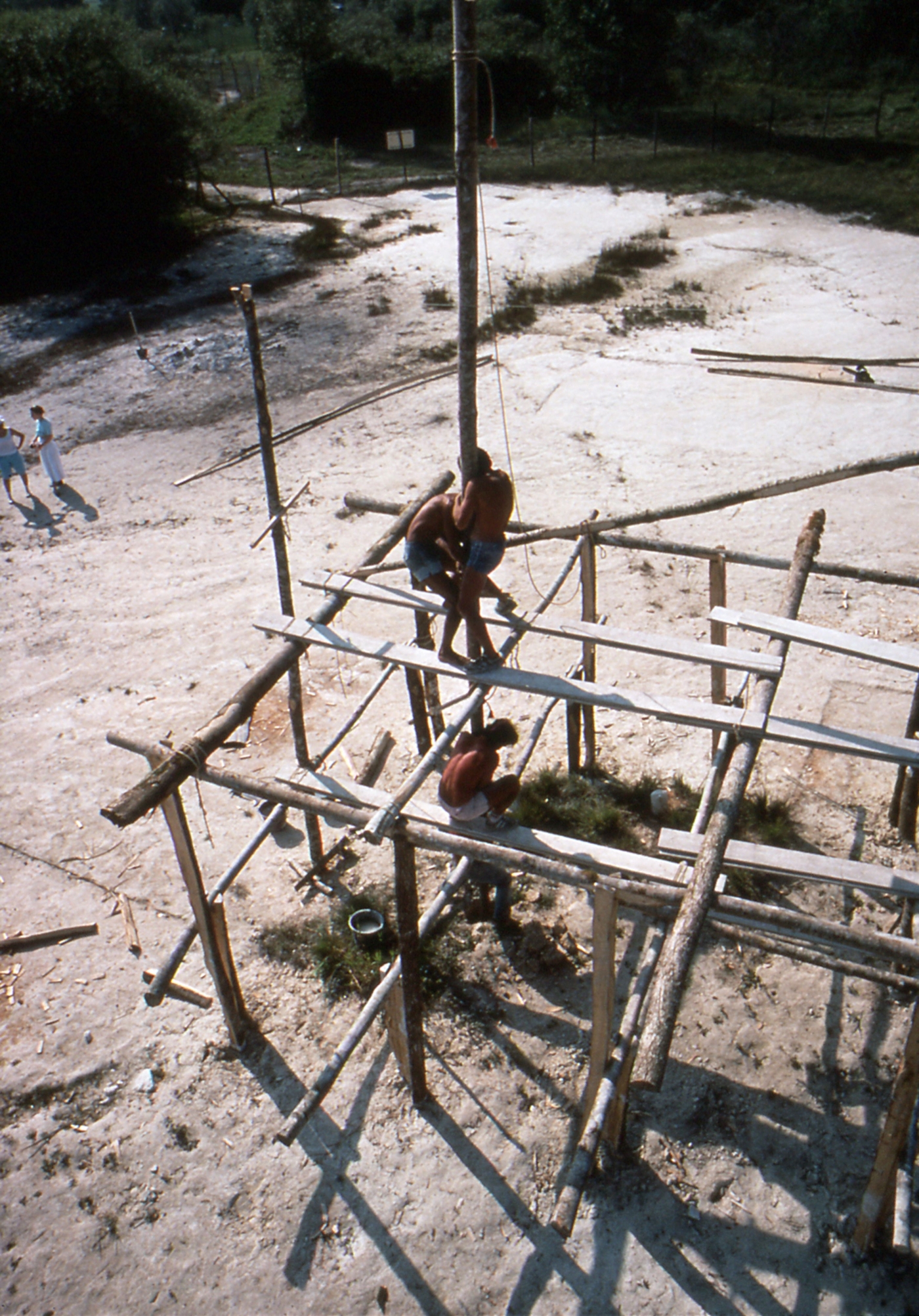Lakeside living. Pile Dwellings
During the Neolithic period, people built pile-dwellings (or stilt houses) in villages on the edge of the lakes of Chalain and Clairvaux in the Jura region of France. They have been underwater since they were abandoned 5,000 years ago and the mostly organic remains are remarkably well preserved. Offering an exceptional insight into past societies, they have been inscribed on the UNESCO World Heritage List, alongside 109 other pile-dwelling sites in the Alps.

Pile-dwelling sites can be studied, analysed and precisely dated thanks to the exceptional state of conservation of remains found in lake environments. After more than 50 years of research in Chalain and Clairvaux, it is now possible to reconstruct the daily lives of its inhabitants, their way of life, their environment and how it changed over time.
Lake villages: an Alpine phenomenon
From approximately 5000 BCE, many hamlets and villages were built on the lakeside and in marshland around the Alps, in present-day Austria, France, Germany, Italy, Slovenia and Switzerland. Around one thousand sites have now been identified. Consisting of a group of wooden houses and granaries, these villages also had fences, accessways and palisades. These dwellings and the objects used by the people who lived in them have survived thanks to their waterlogged environment; their exceptional state of conservation makes them a key primary source material for understanding the history of early agrarian societies in Central Europe.
More than 50 sites have been identified in the lakes of the Jura region, most dating from the Neolithic. The oldest site, in Clairvaux, dates from 3900 BCE; Lake Chalain has more villages, mostly dating from the end of the Neolithic period, between 3200 and 2600 BCE.
Although few people have heard of these pile-dwelling sites in France, this is not the case in other European countries, where their discovery in the mid-19th century caused a sensation. Aware of the importance of this extraordinary heritage, UNESCO inscribed 111 of these “Prehistoric Pile Dwellings around the Alps" on the World Heritage List in 2011.
Multidisciplinary research
In a waterlogged or submerged environment, remains that normally decay on land sites are conserved, particularly plant remains like wood, foodstuffs and clothes. Since archaeologists had to develop new methods to study these remains, they turned to other sciences and developed new disciplines, such as dendrochronology (the study of tree rings to date constructions), carpology (the study of seeds) and palynology (the study of pollen). The new information they obtained using these methods led archaeologists to ask new questions and to take a different approach to the remains. In parallel to their archaeological investigations, the team of researchers working on the Chalain and Clairvaux sites also made use of ethnoarchaeology and experimental archaeology under real conditions to broaden their perspectives. Thanks to the study of these sites, all archaeological sciences have taken a giant leap forward.
Daily life at the lakeside
The research produced over the last 50 years has made it possible to reconstruct to daily lives of the farming communities who lived on the edge of Lake Chalain and Lake Clairvaux in great detail. Environmental studies provide a clear picture of the region where they lived and farmed and how it changed over time. Archaeological research has shed light on how the villages were organised, their economic basis, the technologies they used and the way they thought about life in society. By examining these findings in parallel with the results of experimental archaeology and ethnoarchaeological approaches, we can finally enter into the personal lives and homes of the lake-dwellers, explore their construction and use, and look at how they cooked and what they ate!
This publication was produced under the direction of archaeologists Pierre and Anne-Marie Pétrequin, under the supervision of the French National Centre for Scientific Research (CNRS), and the Ain Valley Archaeological Research Centre (CRAVA).
Useful links
-
111 pile-dwelling sites: https://www.palafittes.org/
-
Espace archéologique de Clairvaux https://www.clairvaux-les-lacs.com/espacearcheo.php
-
Les musées de https://www.lonslesaunier.fr/les-musees/
-
Interactive map of pile dwellings: https://www.palafittes.org/interaktiv.html
-
Page celebrating the 10th anniversary of the inscription on the World Heritage List by UNESCO of the Prehistoric Pile-Dwelling Sites to the North of the Alps: https://www.palafittes.org/10-ans-au-patrimoine-mondial.html





